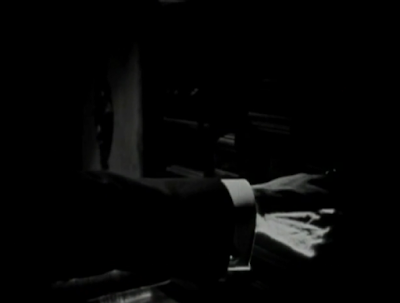From a classic western last week to a circus thriller/romance/tragedy, a bit of whiplash. But this film represents several film history milestones and I was thrilled to watch it for the first time.
He Who Gets Slapped (1924)
Director: Victor Sjöström (as Victor Seastrom)
Writer: Victor Sjöström & Carey Wilson (based on the play He, the One Who Gets Slapped by Leonid Andreyev)
Cinematographer: Milton Moore
Producer: Louis B. Mayer for MGM
Starring: Lon Chaney, Norma Shearer, John Gilbert, Marc McDermott, Ruth King, Tully Marshall
Because of the name? I had heard of this film; it hadn't registered strongly for me as a 'must-see' film yet I remembered the name. When it appeared, during my research, on a list of acclaimed 1924 films, I added it to my shortlist; my Twitter followers voted it to the top.
'No-spoiler' plot overview
- Theaters started screening double features for the first time.
- Prolific silent-era producer/director Thomas Ince died in what was rumored to be murder or accidental homicide aboard the pleasure boat of William Randolph Hearst, by Hearst, or Charlie Chaplin, or ??. It seems that the modern view is that despite some melodramatic antics on the boat, Ince likely succumbed to long-standing coronary disease.
- Erich von Stroheim (featured in the first of my blog series, here) released his epic masterpiece Greed based on the novel McTeague.
- C.B.C. Film Sales Company changed its name to Columbia Pictures Corporation.
- Ah, silent film - how I'd missed you before I started this blog project!
- Like last week, the visuals in this film are breathtaking, but for different reasons. Instead of panoramic vistas, we have expressionistic lighting, symbolic flourishes, and creative dissolves.
- Lon Chaney. There aren't enough superlatives to describe his talent and performance here. While I loved him in Phantom of the Opera (1925), I didn't really appreciate the range of his pantomime abilities, including his mastery of his body as well as his face. I especially loved seeing him as rather normal-looking scientist Paul Beaumont before his transformation to "HE" the clown. He believably embodied the love and passion for discovery that the best scientists have. (He also looked a bit like Paul Muni as Louis Pasteur!)
- Along those lines, I struggle to accept that Marie, Paul's wife, throws him over for the clearly slimy Baron. I mean, money is great and all, but for me having a nerdy scientist husband on the cusp of fame is the far better choice.
- I find the fact that Paul/HE falls for Consuelo to be a sign of how much he's damaged psychologically. While she is lovely and kind, obviously NOT right for him even if she weren't in love with Benzano. The pity and sorrow we feel for him are more intense than if he saw himself as a big-brother or father-figure to Consuelo.
 |
| That look! Beaumont listens to the Baron taking credit for his invention - the start of his humiliation. |
 |
| Academics laughing at the first 'slap' |
 |
| Symbolic scene of a clown spinning a globe |
 |
| More clowns enter the earths' orbit |
 |
| Romance at the circus: Bezano (Gilbert) and Consuelo (Shearer) |
 |
| Kind Consuelo pins a fabric heart on HE's Clown costume, much to his delight. |
 |
| Fabulous shot of clowns laughing at HE's antics |
 |
| Two slimy opportunists (Marshall & McDermott) plan their next scheme. |
 |
| Some small questions the film asks us. |
 |
| This lion is ready for his close-up. |
 |
| Lighting on a hand (the Baron's) reaching to unlock an off-limits cabinet enhances the treachery of the moment. |
Check it out on YouTube here.

































